LAST week we gave a brief synopsis on each of the 12 finalists in the Wesbank/ SAGMJ (South African Guild of Motoring Journalists) Car of the Year competition. This week we take a look at six of these in alphabetical order and in more detail. These include the BMW i3, Citroen C4 Cactus, Ford Fusion, Honda HR-V, Jaguar XE, and Kia Sorento.
The i3 is the second production electric car to be offered in SA after the Nissan Leaf and it not only brings an air of premium to the fore, but it also manages to be the first model of its ilk to come with a range extender, which utilises a 600cc bike engine as a generator for the electric motor’s batteries.
During the wet weather vehicle control simulation on a skidpan at speeds of about 60km/h, the vehicle quickly went out of shape through the lane change manoeuvre. This is largely due to the skinny tyre profile which saw the car quickly going into oversteer and understeer transition, which could catch a driver unawares. Under hard braking in the 400m acceleration test to see how the ABS braking system works, the i3 performed satisfactorily, something that was also evident in the wet.
The dry emergency lane change saw the vehicle leaning progressively, thanks to those thin tyres that give very little in the way of prodigious grip.
Build quality is exemplary as I witnessed while driving over a Belgian cobblestone section of the test track at 40km/h. On both the dynamic and concrete handling track, the vehicle ran out of battery power, so progress was rather slow, but then again the vehicle is also out of its elements under these conditions.
However, with some charge in the batteries, it was quick off the line and offered immediate throttle response out of corners. Sustainable in its construction, the i3 comprises mainly carbon fibre and recycled materials in the cabin. Priced at R611,000 as standard though, it is a hard pill to swallow.
The Citroen C4 Cactus was a surprisingly good performer and thanks to its lightweight and peppy 1.2l, three-cylinder turbocharged engine, it has some decent get up and go. Wet handling was fairly good with predictable directional change, while braking at the 400m acceleration test was fair at worst. In the wet, it also managed to stop well with the ABS doing its thing without qualms. Then it was on to the emergency lane change exercise in the dry, and the handling was surprisingly good.
While the interior theme is funky in its layout, the tactile quality is not in its repertoire of talents. It feels as though rattles and squeaks will plague the vehicle in two to three years’ time. That aside, it proved competent throughout the handling track exercises.
At R320,400, as tested here, it is not what one would deem cheap and those clip-open rear windows are less of a novelty and more of an annoyance.
There is a great deal to like about the Ford Fusion. It looks great, has acres of passenger and boot space, and a high level of standard equipment. Also, thanks to the 1.5l Ecoboost engine, it has decent performance on offer.
During rigorous testing, it proved to be competent through the skidpan’s lane change manoeuvre with electronics preventing the big sedan from going out of shape.
It made an indelible mark in the emergency braking exercises with the ABS managing to bring the car to a complete stop with little fuss, even on the wet sections. Handling, for a car of this size, is very good even though the actual size and length of the car always made its presence known. Priced at R375,170, as tested, it offers excellent value for money. It also has commendable build quality, which remains one of the company’s fortes.
Sadly, while its main competitors are the Honda Accord, Volvo S60 and Lexus ES, in the minds of the more badge conscious, the Fusion also has to contend with the German offerings, which although requiring a higher capital outlay, remain popular.
Honda’s HR-V is a welcome addition to the segment. It looks good, has a well laid-out cabin and has decent space.
It proved to be competent through all the exercises, but the incessant drone from the transmission meant the engine was always vocal. A manual gearbox or even a conventional automatic would be great. At R370,500 it is quite pricey, but it does come well-kitted out.
Jaguar’s proponent to the medium executive premium segment could not have come any sooner. Being hewn mostly of aluminium, the car feels nimble and surefooted under any driving conditions. It proved its mettle through all the exercises on the day with no flinching or coming unstuck.
The turbodiesel engine is a peach, with good torque and exemplary fuel consumption. Alas, the cramped rear quarters and the relatively steep price of R619,900 means it is priced out of contention compared to its triumvirate of German rivals.
Kia’s Sorento is, for the most part, a well-sorted family SUV with high levels of comfort and standard equipment. While it proved to be a competent proposition throughout the test days, I wished that the bigger, R20,000 optional infotainment screen could be part of the standard furniture for this top-spec variant. Other than that it has a super turbodiesel engine and great build quality and refinement, while the price of R691,995 is competitive in the current landscape.
Next week we place the Land Rover Discovery Sport, Mazda2, Opel Adam, Opel Corsa, Peugeot 308, and Volvo XC90 under the microscope to see how they fared on test days. It is safe to say that the competition is hot this year.
-

Testing the comfort of the Jaguar XE on the Belgian paving suspension track. Picture: INGA HENDRICKS
-

The BMW i3 on the skid pan showing that electricity and water can mix. Picture: INGA HENDRICKS
-

Ford’s Fusion attacking the dynamic handling track. Picture: INGA HENDRICKS
LAST week we gave a brief synopsis on each of the 12 finalists in the Wesbank/ SAGMJ (South African Guild of Motoring Journalists) Car of the Year competition. This week we take a look at six of these in alphabetical order and in more detail. These include the BMW i3, Citroen C4 Cactus, Ford Fusion, Honda HR-V, Jaguar XE, and Kia Sorento.
The i3 is the second production electric car to be offered in SA after the Nissan Leaf and it not only brings an air of premium to the fore, but it also manages to be the first model of its ilk to come with a range extender, which utilises a 600cc bike engine as a generator for the electric motor’s batteries.
During the wet weather vehicle control simulation on a skidpan at speeds of about 60km/h, the vehicle quickly went out of shape through the lane change manoeuvre. This is largely due to the skinny tyre profile which saw the car quickly going into oversteer and understeer transition, which could catch a driver unawares. Under hard braking in the 400m acceleration test to see how the ABS braking system works, the i3 performed satisfactorily, something that was also evident in the wet.
The dry emergency lane change saw the vehicle leaning progressively, thanks to those thin tyres that give very little in the way of prodigious grip.
Build quality is exemplary as I witnessed while driving over a Belgian cobblestone section of the test track at 40km/h. On both the dynamic and concrete handling track, the vehicle ran out of battery power, so progress was rather slow, but then again the vehicle is also out of its elements under these conditions.
However, with some charge in the batteries, it was quick off the line and offered immediate throttle response out of corners. Sustainable in its construction, the i3 comprises mainly carbon fibre and recycled materials in the cabin. Priced at R611,000 as standard though, it is a hard pill to swallow.
The Citroen C4 Cactus was a surprisingly good performer and thanks to its lightweight and peppy 1.2l, three-cylinder turbocharged engine, it has some decent get up and go. Wet handling was fairly good with predictable directional change, while braking at the 400m acceleration test was fair at worst. In the wet, it also managed to stop well with the ABS doing its thing without qualms. Then it was on to the emergency lane change exercise in the dry, and the handling was surprisingly good.
While the interior theme is funky in its layout, the tactile quality is not in its repertoire of talents. It feels as though rattles and squeaks will plague the vehicle in two to three years’ time. That aside, it proved competent throughout the handling track exercises.
At R320,400, as tested here, it is not what one would deem cheap and those clip-open rear windows are less of a novelty and more of an annoyance.
There is a great deal to like about the Ford Fusion. It looks great, has acres of passenger and boot space, and a high level of standard equipment. Also, thanks to the 1.5l Ecoboost engine, it has decent performance on offer.
During rigorous testing, it proved to be competent through the skidpan’s lane change manoeuvre with electronics preventing the big sedan from going out of shape.
It made an indelible mark in the emergency braking exercises with the ABS managing to bring the car to a complete stop with little fuss, even on the wet sections. Handling, for a car of this size, is very good even though the actual size and length of the car always made its presence known. Priced at R375,170, as tested, it offers excellent value for money. It also has commendable build quality, which remains one of the company’s fortes.
Sadly, while its main competitors are the Honda Accord, Volvo S60 and Lexus ES, in the minds of the more badge conscious, the Fusion also has to contend with the German offerings, which although requiring a higher capital outlay, remain popular.
Honda’s HR-V is a welcome addition to the segment. It looks good, has a well laid-out cabin and has decent space.
It proved to be competent through all the exercises, but the incessant drone from the transmission meant the engine was always vocal. A manual gearbox or even a conventional automatic would be great. At R370,500 it is quite pricey, but it does come well-kitted out.
Jaguar’s proponent to the medium executive premium segment could not have come any sooner. Being hewn mostly of aluminium, the car feels nimble and surefooted under any driving conditions. It proved its mettle through all the exercises on the day with no flinching or coming unstuck.
The turbodiesel engine is a peach, with good torque and exemplary fuel consumption. Alas, the cramped rear quarters and the relatively steep price of R619,900 means it is priced out of contention compared to its triumvirate of German rivals.
Kia’s Sorento is, for the most part, a well-sorted family SUV with high levels of comfort and standard equipment. While it proved to be a competent proposition throughout the test days, I wished that the bigger, R20,000 optional infotainment screen could be part of the standard furniture for this top-spec variant. Other than that it has a super turbodiesel engine and great build quality and refinement, while the price of R691,995 is competitive in the current landscape.
Next week we place the Land Rover Discovery Sport, Mazda2, Opel Adam, Opel Corsa, Peugeot 308, and Volvo XC90 under the microscope to see how they fared on test days. It is safe to say that the competition is hot this year.










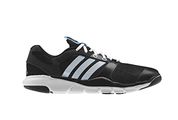
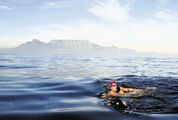










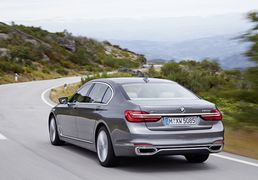

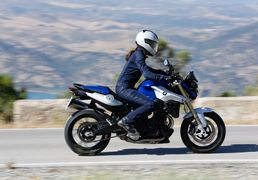
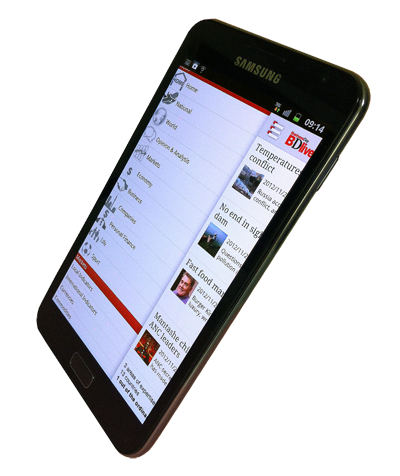




Change: 1.61%
Change: 1.50%
Change: 1.82%
Change: 0.74%
Change: 4.50%
Data supplied by Profile Data
Change: -0.27%
Change: 0.26%
Change: 1.61%
Change: 0.00%
Change: 0.35%
Data supplied by Profile Data
Change: -0.30%
Change: -0.33%
Change: -0.23%
Change: -0.29%
Change: 0.00%
Data supplied by Profile Data
Change: 1.58%
Change: 1.07%
Change: 1.14%
Change: 3.88%
Change: 0.65%
Data supplied by Profile Data